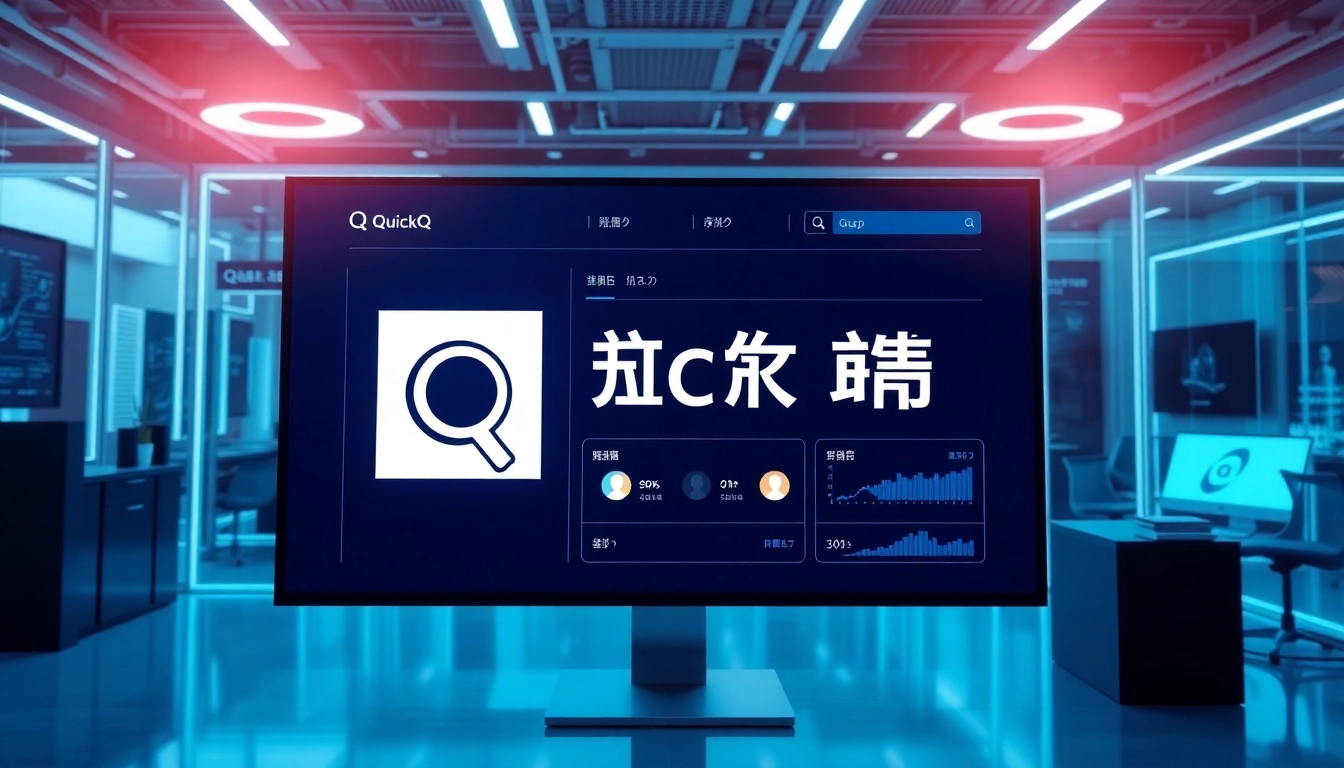Understanding Cloud Infrastructure and DevOps Services
Definition and Key Concepts
Cloud infrastructure refers to the collection of hardware and software components that enable cloud computing, including servers, storage systems, and networking elements, all delivered over the Internet. It allows organizations to access and manage data remotely, offering flexibility and scalability that traditional IT infrastructure cannot provide. On the other hand, DevOps is a set of practices that combines software development (Dev) and IT operations (Ops). The core objective of DevOps is to shorten the development lifecycle while delivering high-quality software, effectively bridging the gap between development and operations teams.
The integration of Cloud infrastructure and DevOps services enhances both operational efficiencies and collaborative efficiencies, ultimately leading to faster and more reliable software development cycles. Together, they form the backbone of modern IT strategies by providing the necessary tools and frameworks for successful deployment and operation.
Importance of Cloud Infrastructure in DevOps
Utilizing cloud infrastructure within DevOps practices is crucial. It supports the rapid deployment of applications and services while ensuring scalability and availability. The cloud provides nearly unlimited resources that can be accessed and provisioned in real-time, which enhances the alignment between development and operations teams.
This cloud-enabled agility allows for the implementation of continuous integration and continuous delivery (CI/CD) pipelines, where developers can deploy code changes quickly and frequently. Moreover, cloud infrastructure’s inherent capabilities for automation and orchestration allow teams to focus on innovation rather than manual processes, reducing the risk of human error and increasing deployment speed.
The Role of Automation in DevOps Services
Automation is at the heart of effective DevOps services. It encompasses the use of tools and technologies to automate repetitive tasks, thus enabling teams to focus on more critical activities like writing code and enhancing customer experiences. Key domains where automation plays a vital role include:
- Building and Testing: Automated build processes ensure that the latest code changes are compiled and tested, providing immediate feedback to developers.
- Deployment: Automation streamlines deployment processes, allowing teams to push updates without downtime.
- Monitoring: Automated monitoring tools keep track of application health, performance metrics, and resource allocation, enabling quick identification and resolution of issues.
Overall, automation enhances productivity, fosters innovation, and contributes to the reliable delivery of software products.
Benefits of Cloud Infrastructure and DevOps Services Integration
Boosting Development Speed
One of the primary advantages of integrating cloud infrastructure with DevOps services is the acceleration of development cycles. By leveraging cloud resources, teams can rapidly prototype, iterate, and deploy applications. This speed is compounded by the CI/CD approaches that automate the testing and deployment processes, ensuring that software updates can be released to users in a matter of minutes instead of weeks.
Enhanced Scalability and Flexibility
Cloud infrastructure offers unparalleled scalability. As demand fluctuates, organizations can swiftly scale their resources up or down without needing to physically install or remove hardware. This elasticity ensures that applications can handle varying workloads efficiently, reducing costs associated with underutilized resources. Flexibility is also enhanced as teams can utilize various cloud services tailored to specific application needs, such as database services, storage solutions, and computing power.
Improved Collaboration Across Teams
Collaboration between teams is essential for successful software delivery. Cloud infrastructure fosters better communication and synergy among development, operations, and security teams. With shared access to resources and tools, teams can work on projects in parallel and ensure that feedback loops are short and effective. Utilizing shared tools and platforms allows team members to collaborate in real-time, breaking down silos that often lead to miscommunication and delays.
Common Challenges in Implementing Cloud Infrastructure and DevOps Services
Managing Complexity and Security Risks
While the benefits of integrating cloud infrastructure with DevOps practices are significant, organizations often face challenges related to complexity and security. The vastness of cloud resources can lead to confusion over architecture and data management. Additionally, security is a growing concern, as the more complex cloud environments may introduce vulnerabilities. Organizations need to implement robust security measures, such as identity and access management, encryption, and continuous monitoring, to mitigate these risks effectively.
Resistance to Change in Teams
Another common challenge is resistance to change from team members accustomed to traditional development and operations practices. Shifting to a DevOps culture requires a mindset change, which can be difficult for some employees. Companies must invest in training, support, and cultural transformation strategies to nurture a collaborative and open environment. Highlighting success stories and involving stakeholders in the planning process can also encourage buy-in at all levels.
Integration with Legacy Systems
Many organizations operate with legacy IT systems that can complicate the implementation of modern DevOps practices. Seamless integration between cloud infrastructure, DevOps, and legacy systems is often essential, yet difficult to achieve. Careful planning is necessary to create an effective cloud migration strategy that considers existing systems, needs for data continuity, and the performance of new solutions.
Best Practices for Optimizing Cloud Infrastructure and DevOps Services
Continuous Integration and Continuous Delivery (CI/CD) Frameworks
To optimize the benefits of cloud infrastructure and DevOps services, the adoption of CI/CD frameworks is essential. These frameworks encourage smaller, more manageable code changes that can be tested automatically, allowing for rapid feedback and deployment. Implementing CI/CD tools such as Jenkins, GitLab, or CircleCI can automate the integration and deployment processes, significantly enhancing development speed and reliability.
Infrastructure as Code (IaC) Principles
Infrastructure as Code (IaC) transforms IT operations. This practice involves managing and provisioning computing infrastructure through machine-readable definition files, rather than physical hardware configuration or interactive configuration tools. IaC enables teams to build, change, and version infrastructure safely and efficiently. Tools like Terraform and AWS CloudFormation empower DevOps teams to automate the setup of infrastructure, ensuring consistency and repeatability across environments.
Monitoring and Metrics for Success
Implementing a robust monitoring strategy is crucial for assessing the effectiveness of integrated cloud infrastructure and DevOps services. Metrics such as deployment frequency, lead time for changes, and mean time to recovery should be tracked to evaluate performance. Utilizing tools like Prometheus, Grafana, or ELK Stack can provide insights into system performance and application health, enabling teams to respond to issues proactively and continuously improve processes.
Future Trends in Cloud Infrastructure and DevOps Services
Adoption of AI and Machine Learning
As technology evolves, the integration of artificial intelligence (AI) and machine learning (ML) within DevOps processes is becoming increasingly prevalent. These technologies can enhance predictive analytics, automate routine tasks, and improve decision-making capabilities by analyzing vast amounts of data. AI and ML can help anticipate issues before they arise, resulting in increased uptime and enhanced user experiences.
Serverless Computing Innovations
Serverless computing represents a significant shift in how cloud-based applications are developed and deployed. With serverless architectures, developers can focus solely on writing code and building applications without managing the underlying infrastructure. These innovations simplify resource allocation and billing by charging only for actual usage, which can lead to significant cost savings and operational efficiencies.
A Focus on Security and Compliance
As organizations increasingly rely on cloud infrastructure for their operations, the focus on security and compliance will only intensify. Companies must adopt a proactive approach by integrating security into their DevOps practices, known as DevSecOps. This ensures that security measures are incorporated throughout the software development lifecycle rather than being an afterthought. Compliance frameworks, such as GDPR and HIPAA, are also essential to address legal and regulatory requirements effectively.














Leave a Reply